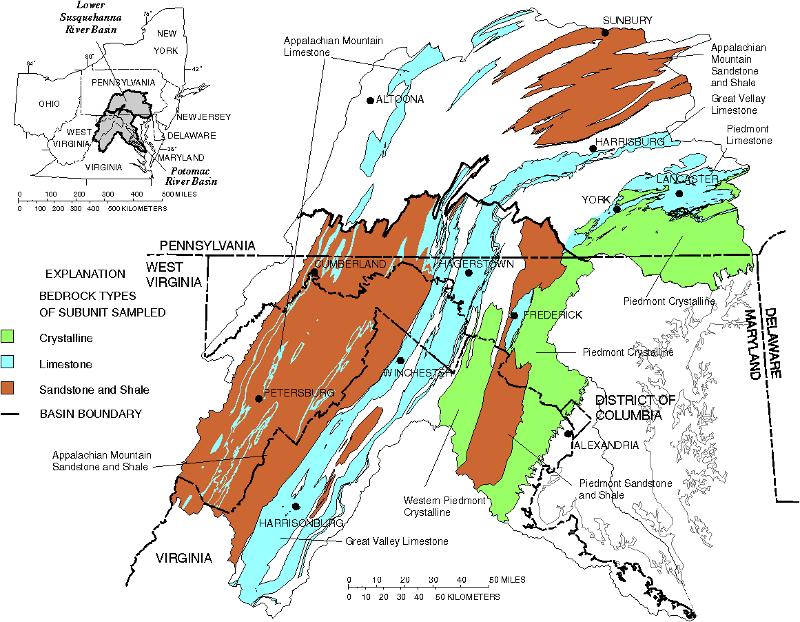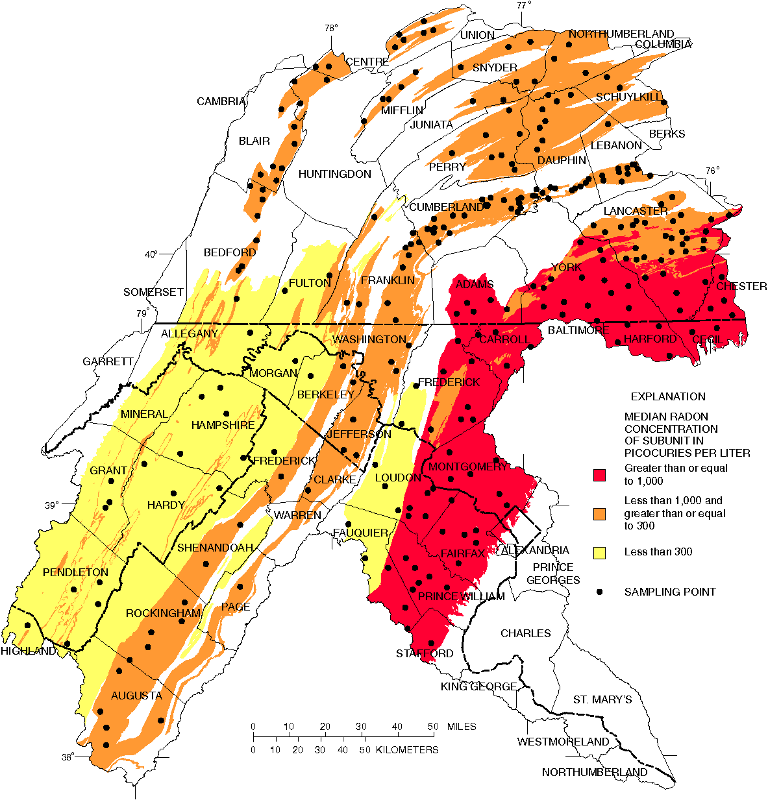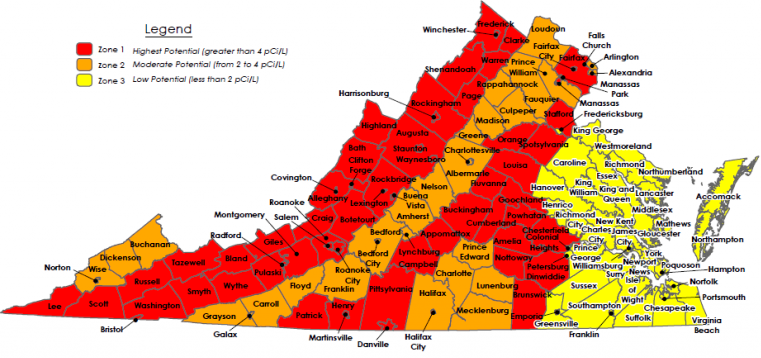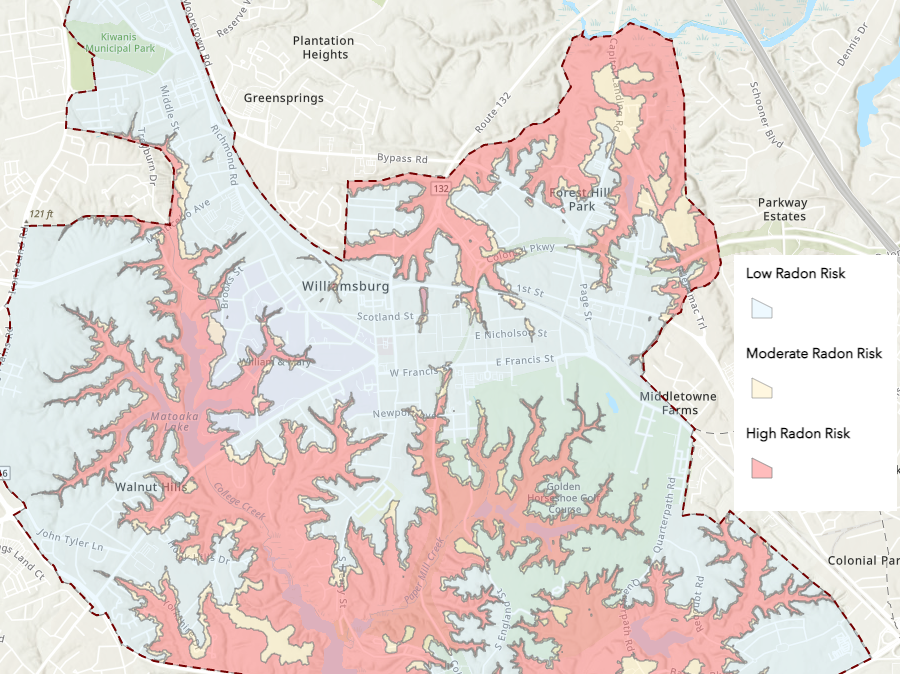
rock units sampled for radon
Source: US Geological Survey (USGS), Radon in Ground Water of the Lower Susquehanna and Potomac River Basins

rock units sampled for radon
Source: US Geological Survey (USGS), Radon in Ground Water of the Lower Susquehanna and Potomac River Basins
Radon is a radioactive gas associated with the decay of uranium atoms. Uranium-238 produces radium-226 (another solid) as a decay product, then emission of alpha particles turns the radium into radon-222 (a gas). radium-226 is one of the decay products. Radon then decays to polonium-218 and lead-214. The final element in the decay series is lead-206.1
The gas can seep from the soil into a house, exposing residents to an increased risk of lung cancer. When air pressure drops, radon seeps at a higher rate out of the soil.
In the Williamsburg area, the greatest source of radon is the Yorktown Formation.

higher concentrations of uranium in granite bedrock leads to higher radon levels in groundwater
Source: US Geological Survey (USGS), Radon in Ground Water of the Lower Susquehanna and Potomac River Basins

radon risk is related to bedrock geology
Source: Virginia Department of Health, Radon Risk Map for Virginia

houses in Williamsburg with basements in the Yorktown Formation are at greatest risk of radon exposure
Source: Radon in Williamsburg Area Homes
Source: Environmental Protection Agency (EPA), An Introduction to Radon Gas in Homes Webinar